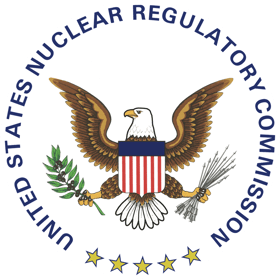Nuclear Regulatory Commission: Human Capital Assessment
 In 1974, the U.S. Nuclear Regulatory Commission (NRC) emerged as an autonomous entity following its establishment by Congress. Its primary mandate involves safeguarding the secure utilization of radioactive substances for advantageous civilian objectives, all the while upholding the welfare of individuals and the surroundings. The NRC assumes the responsibility of overseeing commercial nuclear power facilities as well as various applications of nuclear materials, including their usage in fields like nuclear medicine. This oversight is executed through a framework of licensing, rigorous inspections, and the enforcement of stipulated regulations.
In 1974, the U.S. Nuclear Regulatory Commission (NRC) emerged as an autonomous entity following its establishment by Congress. Its primary mandate involves safeguarding the secure utilization of radioactive substances for advantageous civilian objectives, all the while upholding the welfare of individuals and the surroundings. The NRC assumes the responsibility of overseeing commercial nuclear power facilities as well as various applications of nuclear materials, including their usage in fields like nuclear medicine. This oversight is executed through a framework of licensing, rigorous inspections, and the enforcement of stipulated regulations.
The NRC has built a comprehensive Competency Model (CM) Program to identify the strengths and weaknesses of individual staff, and the overall workforce, in skill areas or behaviors. Kaptivate partnered with NRC to align the CM program to broader human capital strategies to ensure the program contributed to organizational relevance and resilience.
Project Highlights
Culture & Change Management
Staff Composition
Benchmarking & Continuous Improvement
Kaptivate was tasked with assessing the Nuclear Regulatory Commission’s competency modeling (CM) program. The program’s original goal was to pinpoint skill gaps between desired and actual competencies, crucial for targeted training and development. Through its assessment, Kaptivate identified more potential value for the organization if it could align the CM program with human capital strategies, aiding succession planning and leadership development by identifying potential leaders. Moreover, the assessment also demonstrated how fine-tuning competency models and assessments could enhance employee self-awareness and engagement. A more strategic CM program can foster a culture capable of managing change, optimizing staff composition, and providing a baseline for continuous improvement.

.jpg)
